Jackson Coppley's Blog, page 9
August 18, 2022
Rehoboth Beach Reads Short Story Contest names winners

I was honored to be a judge for Beach Holidays
‘Beach Holidays’ anthology to be published in late 2022
August 17, 2022
Cat & Mouse Press of Lewes has announced the winners of the 2022 Rehoboth Beach Reads Short Story Contest.
A panel of six judges made the selections, which will be published in an anthology titled “Beach Holidays,” to be available by year’s end. Browseabout Books of Rehoboth Beach is the contest sponsor and will award $500 for first place, $250 for second place, and $100 for third place. Each judge also selected a story for special recognition.
The winning stories and their authors are:
Top Stories, first place, “Death by Chocolate,” Renée Rockland, Rehoboth Beach; second place, “Labor (Day) of Love,” Katherine Melvin, Montgomery Village, Md.; and third place, “Sorry, Not Sorry, Wrong Number,” Robin Hill-Page Glanden, Newark.
Judges’ Awards went to “An Almost Perfect Day in April,” Jean Youkers, Hockessin; “Blue House,” Justin Stoeckel, Seaford; “Every Holiday,” Lonn Braender, Washington Crossing, Pa.; “Homebase,” Anna Beck, Lewes; “Take a Chance on Me,” Madison Hallman, Bethany Beach; and “Taking the Plunge,” Renée Rockland, Rehoboth Beach.
Other stories selected for the collection are “Big Wind and Big Water,” Tony Houck, Harrisonburg, Va.; “DALD Day,” David Strauss, Bel Air, Md.; “Dear Alice,” June Flavin, Wilmington; “Ethereal,” Steve Saulsbury, Centreville, Md.; “Fall Ball,” Doretta Warnock, Frankford; “Fourth of July Fundango,” Doug Harrell, Wilmington; “Home for the Hallow Days,” Terri Clifton, Milford; “It Was a Good Day to Fly a Kite,” Michael Morley, Grove City, Pa.; “Mummers in the Time of Y2K,” Nina Phillips, Wilmington; “Power of Three,” Mary Ann Hillier, Raleigh, N.C.; “Summer Valentine's Day,” David Cooper, East Petersburg, Pa.; “The Bench,” Krystina Schuler, Middletown; “The Best Worst Holiday Ever,” Jeanie Blair, Newark; “The Cottage on Washington St.,” Denise Stout, Bel Air; “The Eternal Ocean,” Eric Compton, Bethany Beach; “The Hannukah Bush of Rehoboth,” Mady Segal, College Park, Md.; “The Legend of the Waxing Moon,” Linda Chambers, Baltimore; and “Tidings Of Comfort and…Lizards?!,” Susan Walsh, Clearwater, Fla.
The annual Rehoboth Beach Reads Short Story Contest invites writers to submit stories of 500-3,500 words that feature Rehoboth Beach and fit that year’s theme. The theme for 2022 was Beach Holidays. Judges for the 2022 contest were Jackson Coppley, Lois Hoffman, Dennis Lawson, Mary Pauer, Dylan Roche and Candace Vessella.
Cat & Mouse Press was established to produce books and other materials that are fun, entertaining, and of particular interest to residents of and visitors to the Delmarva region. The company publishes a free weekly newspaper for writers, Writing is a Shore Thing, at writingisashorething.com. For more information, go to browseaboutbooks.com and catandmousepress.com or its Facebook page.
August 13, 2022
Denouement
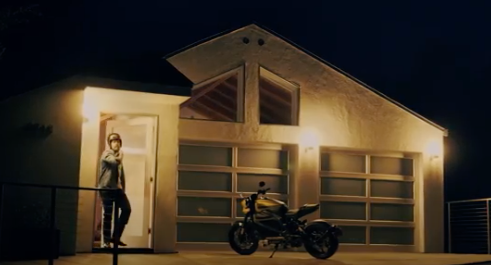
Denouement
the final part of a play, movie, or narrative in which the strands of the plot are drawn together and matters are explained or resolved
Writers know denouement. Now from the Thomas Edison Film Festival 41st Annual Tour, I present this:
For full screen, go to:
July 23, 2022
The Nineteen
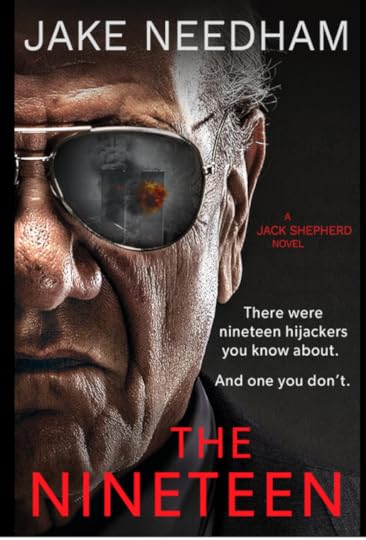
Jake Needham takes you to Thailand on another Jack Shepherd adventure. This time around, we get to know a young DEA lawyer, Lucas Ryan, before Jack enters the story. Ryan spends time getting over jet lag and wondering why he’s there. Something about investigating money laundry operations in that part of the world, he’s been told, but we learn it’s much more. This is before the year 2001, and Al-Qaeda operatives are up to something.
Jack works alongside Lucas in uncovering why people who seem close to this plot have a habit of dying. As he does, Needham takes you through the streets and dives of Bangkok with the smells and grit coming from the writing. You are there. No one describes that part of the world better than Needham.
Everybody knows what happens 9/11, but Needham casts an intriguing backstory. As Needham himself says when the book finishes, it’s all made up. But, what a story.
July 11, 2022
Cloud Cuckoo Land
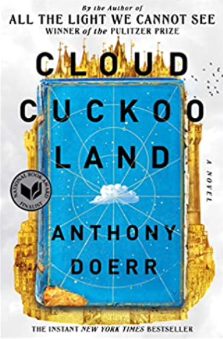
One of my favorite books is All the Light We Cannot See, by Anthony Doerr. So, when Doerr came out with his next work, Cloud Cuckoo Land, I had to read it, despite the wacky name.
In All the Light We Cannot See, Doerr creates two characters whose World War II story arcs alternate between chapters until near the end of the book when they come together. In Cloud Cuckoo Land, Doerr ups the ante with five major characters spanning time in the 15th, 20th, 21st, and even into the 22nd centuries. He keeps you guessing how they will connect to near the end of the over 600 pages of the novel. I kept guessing but was wrong most of the time.
The common glue is the tale of Cloud Cuckoo Land, a Greek tale by Antonius Diogenes about Aethon, a shepherd on a quest to find the fabled paradise in the sky. Reading the author notes at the end, you find that there is no proof that Diogenes wrote such a tale, but that many of his works are lost. So, who knows?
The thing that kept me engaged is the writing. Doerr is a master of the craft. The descriptive detail is mystical. I appreciated each story as a stand-alone tale. Early on, I researched reviews of the book to see how these stories could be related. You are reading this, so you know they are not, at least not until the end.
So, carve out time to read a long novel, sit back, and enjoy.
May 4, 2022
The Immortality Key
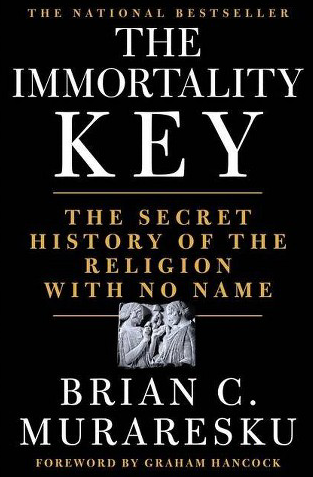
When I first encountered The Immortality Key, I was skeptical. Proving that the earliest religions used psychedelics? Was this written by Timothy Leary? No, it turns out that the author, Brian Muraresku, is a brilliant man trained in the classics (Latin, Greek) and got a law degree to earn a living. He then traveled the world to investigate whether ancient man spiked their beer and wine with mind-altering drugs.
The book spends the first third working with archeologists who have been able to determine that, indeed his premise in likely. Then, the author explores his Catholic roots, or rather, the early Christian church. This was the most interesting part. He explores the gospel of John, setting Mathew, Mark, and Luke aside, because John parallels the Greek myths so closely, particularly that of Dionysus, right down to the Last Supper.
The author also notes how the early church was woman-centric, a far cry from today’s.
He does all this keeping the writing lively, using modern lingo, not scholarly prose. He takes the reader along, setting a pace that is close to adventure fiction.
It’s a long read, but worth it.
April 19, 2022
Happy Endings?
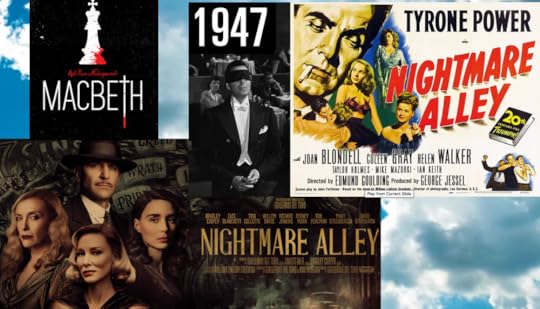
You may have seen my book review of Nightmare Alley. Since that review, I’ve seen the recent movie version starring Bradley Cooper. I couldn’t let it stop there. So, I watched theoriginal 1947 version with Tyrone Power. As you might expect, the early version, released just two years after the book hit the market, is truer to the language of the 1940s. People talked differently then, used expressions long forgotten. However, there was a striking difference. The original movie had a happy ending. Well, a reasonably happy ending.
Spoiler Alert: I tell how the story ends.
The book and both movies spend time in the carney where a “geek” is featured. No, it’s not a computer geek, but a poor alcohol-saturated fellow who bites the heads off chickens for the amusement of the crowd and for his next bottle of booze. We follow a man who starts in the carney as an assistant to a mentalist and follows that career as a mentalist himself, making it to the big time. But they find our hero is a fake, and he descends into the life of an alcoholic bum.
That is where the original movie differs. Whereas the book and the recent Bradley Cooper version end with an ironic, tragic situation, the original movie tacks on a scene where the love interest rushes in to save our hero. Fade to black.
Why? Probably the motion picture code of the period required it. Maybe the studio execs insisted on it. Were audiences who had weathered the great depression and a world war seeking it?
I’ve heard that all the dramas we have today were first created by the Greeks. They certainly knew tragedy. Oedipus killing his father, unwittingly marrying his mother, and putting his own eyes out when he realizes what he had done hardly had them rolling in the marble aisles with laughter in Athens.
More television and movie productions end tragically. It’s not surprising that Macbeth is getting produced all over the place. But why? Do we need happy endings?
April 1, 2022
Does Truth in Fiction Count?
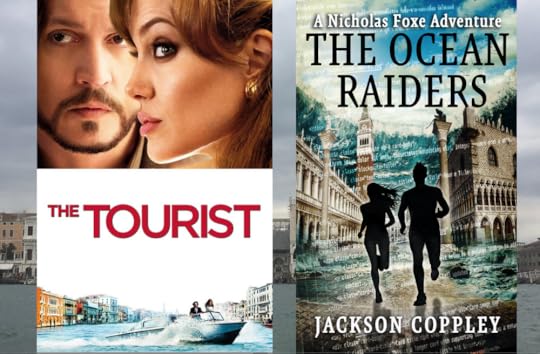
Is it just me, or do the details matter when enjoying fiction? As a citizen of the Washington, DC, area, it annoyed me when the character played by Kevin Costner in the movie No Way Out escaped by running into a Metro station in Georgetown. Why? Because there is no Metro Station in Georgetown. Maybe I can forgive Hollywood using their local underground system to film rather than that of Washington, but at least keep locations true.
David Baldacci put together a thick book of research on atom bombs just to write three pages of fiction where his hero defuses one. I respect that effort, if a little over the top.
Which brings me to the 2010 movie The Tourist set in Venice, Italy. I put it on my viewing list since I set my book The Ocean Raiders in Venice and love the place. I saw the movie last night, and it annoyed me a bit. For fiction to work, just like a magician, the storyteller must suspend disbelief, the viewer or reader must accept what the storyteller portrays, and, if something is out of place, the jolt takes one out of the moment.
In The Tourist, the characters played by Johnny Depp and Angelina Jolie check into a suite at the Hotel Daniele. Filmed on location, the soaring interior of the hotel was spot on. I was there with the two of them, eager to see what happens next. Then Johnny Depp opens a balcony window in their suite overlooking the Grand Canal. Whoops, the Grand Canal is a half-mile away, not beside the Hotel Daniele. OK, I forgave that one. Then, someone flies into the airport, right beside the Grand Canal. Geez, the airport is way away across the lagoon to the north. When Nicholas Foxe, my main character in The Ocean Raiders, arrives at the airport, he takes a water taxi across that lagoon and enters a connecting canal to the Grand Canal where the bad guy attacks Nick and the two fight for a gun in a moving boat. One could be intimately familiar with Venice and that would all make sense, albeit a little dramatic.
When researching The Ocean Raiders, Ellen and I checked out each locale. We stayed in the pensione where a murder takes place; we checked out a suite in the Gritti Palace where Nick violently ends the story, and we talked to the police to be sure we identified the station where a murder in the city would be investigated. Ellen even set up a meeting with the engineers of the Mose flood control project, and I discussed how a tsunami generated in the book would be handled.
Sure, it is unlikely that a machine lies in the Adriatic that can turn sea water into energy. That is the magic in The Ocean Raiders. But, aren’t you more likely to stay with the story if the real things are portrayed as they are?
Does truth in fiction count?
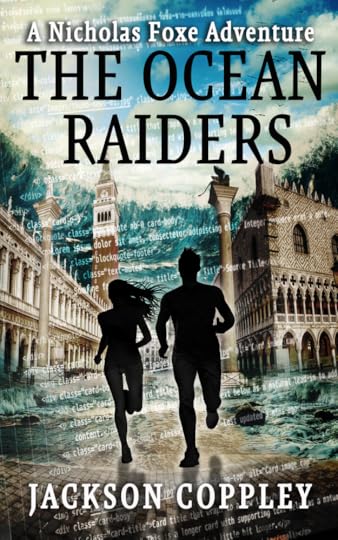
March 27, 2022
Run Rose Run
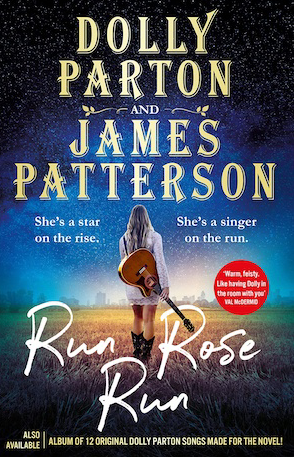
James Paterson’s collaboration with celebrities is an interesting exercise in guessing where one collaborators' work ends and the other begins. In The President is Missing, secret tunnels from beneath the White House were probably Bill Clinton’s contribution, but a House of Representative squirrelly member trying to impeach the president… Yeah, that was Bill.
It doesn’t take much to believe that in Run Rose Run, the countryfied quips that run sweet as sorghum were Dolly Parton’s. To my southern-born ear, they made me smile. If country talk is not for you, they will make you wince.
The book is a rags-to-riches country singer tale, with an unbelievable meteoric rise of a gifted young singer by the name of AnnieLee. A reader must suspend disbelief to enjoy how AnnieLee comes to Nashville sleeping in the park and becomes the next big thing. The list of main characters is short. Besides AnnieLee, there is a fictional country legend Ruthanna (Yes, all the women have two names welded together), who takes AnnieLee under her wing, and love interest Ethan Blake who is strong, handsome, and troubled.
The story arc is sugary until two men who invade her motel room beat AnnieLee. The chapter is so out of character with the story up to then, I had to flip back to see if I missed something. It is a prelude to understanding AnnieLee is not all she pretended to be. The last part of the book is a dark ride by Ethan into AnnieLee’s past.
The novel would earn three stars were it not for my aforementioned soft-spot for country talk. That raised it a notch, and of course, underlying it all is James Patterson’s expertise in the writing craft.
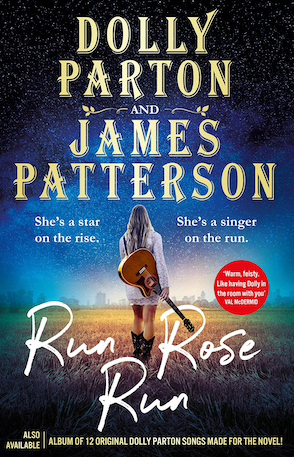
February 27, 2022
Sooley
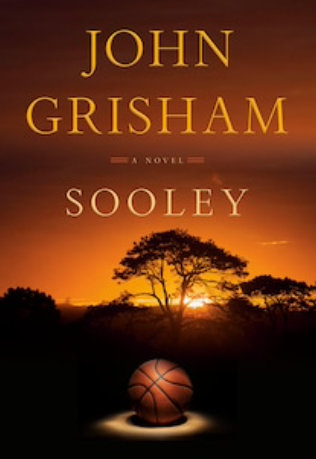
I was born in North Carolina and went to N.C. State, therefore basketball is my heritage. North Carolina has four traditional powerhouses in Duke, UNC, Wake Forest, as well as N.C. State. I relished the evenings in Reynolds Coliseum shouting support for the Wolfpack. John Grisham is a lifelong basketball fan who traveled to Chapel Hill, where his daughter attended college, or Charlottesville, where he lives, to see ACC games.
So, Sooley is likely a labor of love for Grisham. He writes the action on the court like a sports announcer. However, the story is more than play action. It is a human drama of life we know in the United States set in juxtaposition to that in the war-torn South Sudan. The central character is Samuel Sooleymon, a fictional character likely inspired by real life players Manute Bol from Sudan and Mamadi Diakite from Guinea.
Unlike those players, Grisham puts Samuel in something of less than a top tier school, N.C. Central, located in Durham just like that other school, Duke. He did a lot of research about that school and its basketball program, a great deal of research on Sudan and the refugee camps in Uganda.
But I knew none of that when I read Sooley. It read like a real story, in part because so much of it is real, the suffering of the people of Sudan, the escape of a raw talent that makes it big in U.S. basketball, and unfortunately, the extinguishing of a promising life cut short.
Sooley is an engaging read. You need not watch basketball to enjoy it.
February 14, 2022
Nightmare Alley
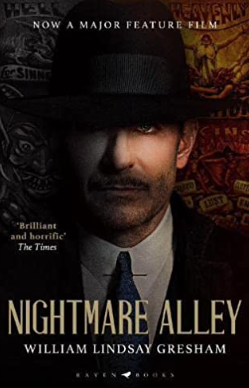
A few months ago, while my wife and I prepared for a signing in our local bookstore of my latest novel, we saw on a nearby rack Nightmare Alley by William Lindsay Gresham. To most, the book would have little meaning. To my wife, it was a part of family lore. Bill Gresham was married to my wife’s Aunt Joy Davidman, who later divorced Bill and married C. S. Lewis. But that is another story. My wife’s mother was a good friend of Bill’s and I’ve heard the tales. Knowing the author’s background from those tales, I understand why Nightmare Alley is all about mind-reading acts, psychiatrists, and a life on the edge.
Nightmare Alley was first published in 1946 and a movie made of it in the following year starring Tyrone Power. Family legend has it those movie rights made it possible for Bill and Joy to buy a house in upstate New York. The reason for the re-release of the novel is the 2021 remake of the movie, this time starring Bradley Cooper and Cate Blanchett.
Grisham set the story in the 1940s when the book was originally written and it’s an excellent portrayal of the common vernacular of the day. Guys are swell and girls are dames. What must have been striking when first published was the visceral language and the dark corners of carney life. The book may be a slap in the face in the beginning, but either it evens out, or this reader became accustomed to the scenes and language.
It is the story of Stan, born into a well-to-do family, but damaged by an unfaithful mother and a distant father. He finds his way into a traveling sideshow as a silver-tongued assistant to a mind reader. He hooks up with lovely, virginal Molly and promises her a better life, which, to Stan, means a more profitable scam. True to his word, Stan plies his craft well. But his demons are not satisfied, and he seeks help from a woman, but this one being a psychiatrist. The story is interesting as Stan’s stature rises, but hits overdrive through the manipulation of the psychiatrist.
Gresham wrote well, and great prose enhances the story. My only quibble with the book is that Gresham had me through Stan’s rise, but his fall was stretched out more than I liked.
Nevertheless, I recommend the book. Some call it dark. I call it noir.



